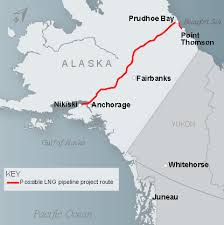
Preparations for a North American gas boom are going gang-busters. From LNGWorldNews:
In another important step forward for the Alaska LNG project, an application to export liquefied natural gas (LNG) was submitted to the U.S. Department of Energy.
The export application requests authorization to export up to 20 million metric tons per year of LNG for a period of 30 years to countries that have existing free trade agreements with the U.S., as well as to non-free trade agreement countries.
…According to a study by NERA Economic Consulting, submitted in support of the application, the Alaska LNG project would have “unequivocally positive” economic impacts in Alaska and the United States. The Alaska LNG project is anticipated to create up to 15,000 jobs during construction and approximately 1,000 jobs for operation of the project.
This project has along way to go with pre-front-end engineering and design underway now and after the DOE comes environmental approval from FERC and marketing of the gas after that. It’s estimated break even costs are around $11mmBtu, well south of Australia’s magnificently expensive seven and the gas reserves are real and big. As well, Alaska’s oil reserves are running down so there is urgency in the government and because the gas is isolated in the Prudhoe Bay area and it’s not currently connected to any North American market, it is less politically sensitive as an export candidate. It’s got a decent shot at fulfillment.
It will be very interesting to watch as it may opt for Henry Hub pricing, assuming it gets that far.

